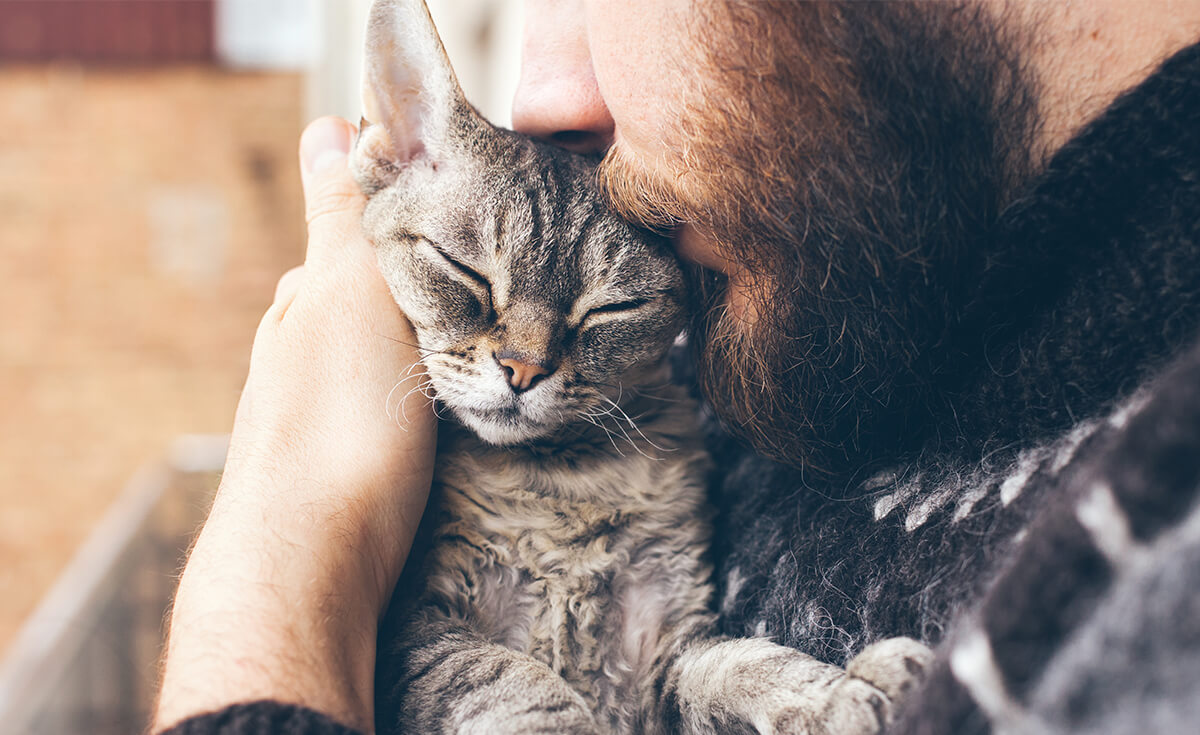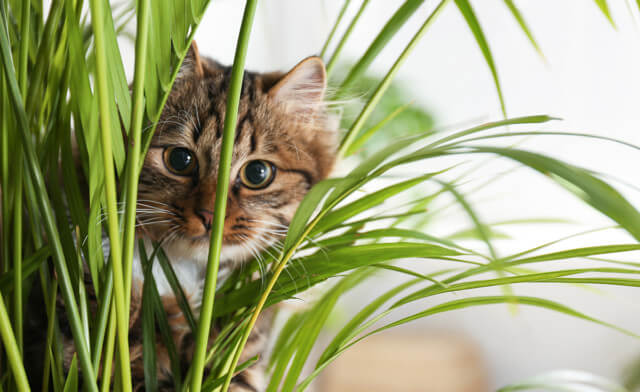Why Do Cats Purr?
Cats are unique animals that captivate us with their various behaviors, particularly purring. The soothing sound of a cat’s purr is something cat owners love to hear! However, while most people associate purring with contentment, the reasons behind why cats purr are a little more complex than you might think. In this blog, we will dive into the world of feline purring and explore the reasons why cats purr, the mechanics behind it, and the potential benefits it brings to both cats and humans. Yes, humans can benefit, too!

Understanding the Purring Behavior
Our feline friends are known for their distinctive purring, a sound that is both familiar and interesting. In order to better understand why cats purr, it’s important to first comprehend how they produce this unique sound.
How Do Cats Purr?
Purring is a complex vocalization that occurs when a cat inhales and exhales. As the cat breathes in and out, the muscles of their larynx dilate and constrict the area around their vocal chords (glottis). This process causes air to vibrate over the laryngeal muscles, resulting in the sound we recognize as a purr.
Now that we know how cats purr, let’s explore the various reasons behind this behavior.
Top 10 Reasons Why Cats Purr
- Contentment and Relaxation: One of the most common reasons why cats purr is because they are happy and relaxed. A cat that is curled up in a comfortable spot, basking in the sunlight or lounging on your lap, will often purr to signal they are feeling good in their current situation.
- Bonding and Affection: Purring starts at a young age when kittens nurse and bond with their mother cat. This early purring serves as a form of communication between the mother and her kittens, helping to strengthen their bond. As cats grow older, they continue to purr when the cat is happy or they feel affectionate towards their human companions or fellow feline housemates.
- Location Signal: Kittens are born blind and deaf, so they rely on alternative methods to locate their mother. The vibrations of their mother’s purr help guide them towards her when it’s time for nursing. Similarly, kittens will purr loudly to make it easier for their mother to find them if they become separated.
- Pain Relief: Surprisingly, cats often purr when they are in pain or experiencing discomfort. Purring releases endorphins, which are natural painkillers that help to ease a cat’s suffering. Additionally, the low frequency of a cat’s purrs (usually around 25 – 150 Hz) has been shown to decrease stress levels, lower blood pressure, and ease labored breathing in cats.
- Self-Healing: Purring may not only provide pain relief, but it could also enhance a cat’s ability to heal. Vibration therapy at frequencies between 20 and 150 Hertz has been shown to speed up the healing of bones, tendons, and wounds. A cat’s purr falls well within this range, potentially stimulating muscle and bone healing as well as pain relief.
- Response to Petting: A commonly asked question is “Why do cats purr when you pet them?” Cats often purr when they are being petted or groomed, as it feels good for them. This type of purring is a clear indication that the cat is enjoying the attention and wants you to continue.
- Self-Soothing: Just like humans, cats can experience stress and anxiety. Purring acts as a self-soothing mechanism that helps cats deal with these emotions. If your cat is purring during a stressful situation, such as a visit to the vet, it is likely an attempt to calm themselves down.
- Hunger Signal: When a cat is hungry, they may purr loudly to get your attention. This purring is often accompanied by other behaviors, such as meowing, rubbing against your legs, or even licking you.
- Mating Call: Cats in heat may purr softly to attract a mate. This purring is usually accompanied by other vocalizations and overly affectionate behavior.
- Communication Tool: Cats have learned to use purring as a way to communicate with humans. They may purr at a higher pitch or combine their purr with a meow-like sound to get our attention. This clever use of purring shows that cats have developed an understanding of how to elicit a response from us.
Decoding Your Cat’s Purring
Knowing the various reasons why cats purr, it’s essential to learn how to interpret your cat’s purring based on the context. Observing their surroundings, body language, and behavior will help you better understand what your cat is trying to communicate.
Purring and Contentment
If your cat is purring while curled up in a comfortable spot or relaxing on your lap, it’s safe to assume they are content. Their purring is a signal that they are enjoying their current situation and feel secure in their environment.
Purring and Pain
If your cat is purring while displaying signs of pain or discomfort, such as changes in facial expressions or unusual behavior, it’s likely that their purring is serving as a form of pain relief. In these cases, it’s important to seek veterinary advice to determine the cause of your cat’s discomfort.
Purring and Hunger
A high-pitched purr that occurs close to mealtime is likely your cat’s way of letting you know they’re hungry. Be mindful of their feeding schedule and ensure they are receiving the proper nutrition to keep them healthy and satisfied.

Purring and Stress
If your cat is purring during a stressful situation, such as a trip to the vet or a thunderstorm, they are likely trying to self-soothe and calm themselves down. Providing a comforting environment and offering reassurance can help ease their anxiety.
The Healing Power of Purring
One of the most remarkable aspects of a cat’s purr is its potential to promote healing, not only in cats but also in humans. The frequency of a cat’s purr has been shown to stimulate tissue regeneration and faster muscle and stimulate bone healing. Research suggests that this healing effect extends to humans, as the frequency corresponds with the one used in vibrational therapies, a scientifically proven method for promoting tissue regeneration.
Not All Cats Purr
While most domestic cats purr, some big cats, such as lions, tigers, jaguars, and most leopards, have a larynx better suited to roaring. These big cats have a large pad of tissue near the front portion of their vocal folds, which helps them roar but may have left them unable to purr.
Conclusion
Cats remain mysterious creatures, and their purring is just one aspect of their unique nature. While we may never fully understand why cats purr, we can appreciate the complexity and beauty of this unique behavior. The healing properties and communication potential of a cat’s purr are truly impressive and serve as a reminder of the special bond we share with our furry friends.




